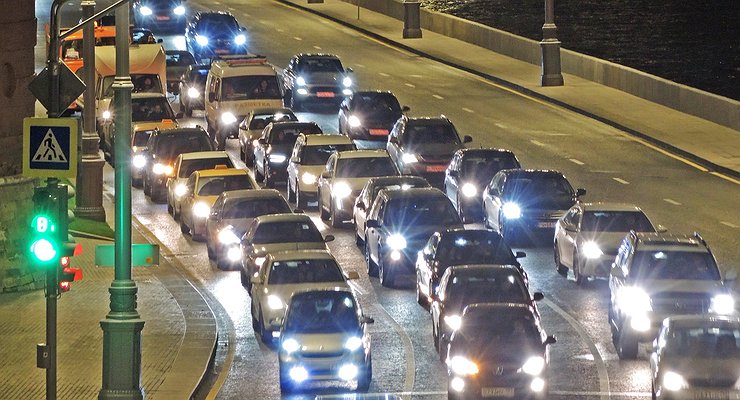Statistics say: almost every third used car sold in Russia has a different mileage. Calculating such a car can be quite difficult even for an experienced car dealer, let alone an ordinary motorist. The AvtoVzglyad portal found out how to expose an unscrupulous seller.
The smaller the numbers on the car’s odometer, the theoretically less wear and tear on the parts and assemblies. And that is why it is valued more expensive in the market. The temptation to underestimate the actual mileage is also great because the price of the services of specialists in this field is extremely low compared to the potential profit of “twisting”. The internet is full of sites that offer such services at a very specific price list.
The cost of professional mileage reduction for the most common makes and models of cars is in the range of 3,000-6,000 rubles. Working with copies of some particularly “resistant” brands will cost 10,000-15,000 rubles. And for rolling a kilometer, for example, some Rolls-Royce can be asked for 50,000, but in this case the price tag is determined not by the complexity of the work itself, but by the pretentiousness of the model. Skilled specialists in this field “clean” the mileage data of all places in the car where such information is stored.
For models where the engine’s used engine resource is captured in the “memory” of the onboard electronics, this is also underestimated. It seems unrealistic to reveal the fact of “turning” under such initial conditions, and in most cases the actual mileage of the vehicle can only be judged by indirect signs such as the condition of the bodywork, interior elements and the Like . In fact, this isn’t quite true, and here’s why.
An advanced buyer of a used car, before buying, without fail drives the car to a car service center to find out its technical condition. This procedure also includes computer diagnosis of the vehicle. During this you must ask the master to “climb” into that section of the scanner menu where a parameter like the total time of power steering activity is displayed. The figures indicated are real engine hours, as the amplifier only works when the engine is on.
We extract the car’s mileage data from the odometer and divide it by the freshly found number of engine hours. In this way we find out what average speed the car has driven during its life. If it turns out to be a pedestrian, we can safely say: the mileage is twisted and strong. For understanding, let’s say that the average speed when driving in the city is about 20-25 km / h – taking into account standing still in “dead” traffic jams, warming up in winter and similar modes. Well, if the seller claims that the car was mainly used for highway trips to the country, then the average speed over the entire life of the vehicle should be at least noticeably higher than the “urban” speed. Armed with numbers like that, a potential car buyer refuses to buy it, or gets a great argument for a radical deal with a cunning car salesman.
The smaller the numbers on the car’s odometer, the theoretically less wear and tear on the parts and assemblies. And that is why it is valued more expensive in the market. The temptation to underestimate the actual mileage is also great because the price of the services of specialists in this field is extremely low compared to the potential profit of “twisting”. The internet is full of sites that offer such services at a very specific price list.
The cost of professional mileage reduction for the most common makes and models of cars is in the range of 3,000-6,000 rubles. Working with copies of some particularly “resistant” brands will cost 10,000-15,000 rubles. And for rolling a kilometer, for example, some Rolls-Royce can be asked for 50,000, but in this case the price tag is determined not by the complexity of the work itself, but by the pretentiousness of the model. Skilled specialists in this field “clean” the mileage data of all places in the car where such information is stored.
For models where the engine’s used engine resource is captured in the “memory” of the onboard electronics, this is also underestimated. It seems unrealistic to reveal the fact of “turning” under such initial conditions, and in most cases the actual mileage of the vehicle can only be judged by indirect signs such as the condition of the bodywork, interior elements and the Like . In fact, this isn’t quite true, and here’s why.
An advanced buyer of a used car, before buying, without fail drives the car to a car service center to find out its technical condition. This procedure also includes computer diagnosis of the vehicle. During this you must ask the master to “climb” into that section of the scanner menu where a parameter like the total time of power steering activity is displayed. The figures indicated are real engine hours, as the amplifier only works when the engine is on.
We extract the car’s mileage data from the odometer and divide it by the freshly found number of engine hours. In this way we find out what average speed the car has driven during its life. If it turns out to be a pedestrian, we can safely say: the mileage is twisted and strong. For understanding, let’s say that the average speed when driving in the city is about 20-25 km / h – taking into account standing still in “dead” traffic jams, warming up in winter and similar modes. Well, if the seller claims that the car was mainly used for highway trips to the country, then the average speed over the entire life of the vehicle should be at least noticeably higher than the “urban” speed. Armed with numbers like that, a potential car buyer refuses to buy it, or gets a great argument for a radical deal with a cunning car salesman.
Source: Avto Vzglyad
I’m Sandra Torres, a passionate journalist and content creator. My specialty lies in covering the latest gadgets, trends and tech news for Div Bracket. With over 5 years of experience as a professional writer, I have built up an impressive portfolio of published works that showcase my expertise in this field.














